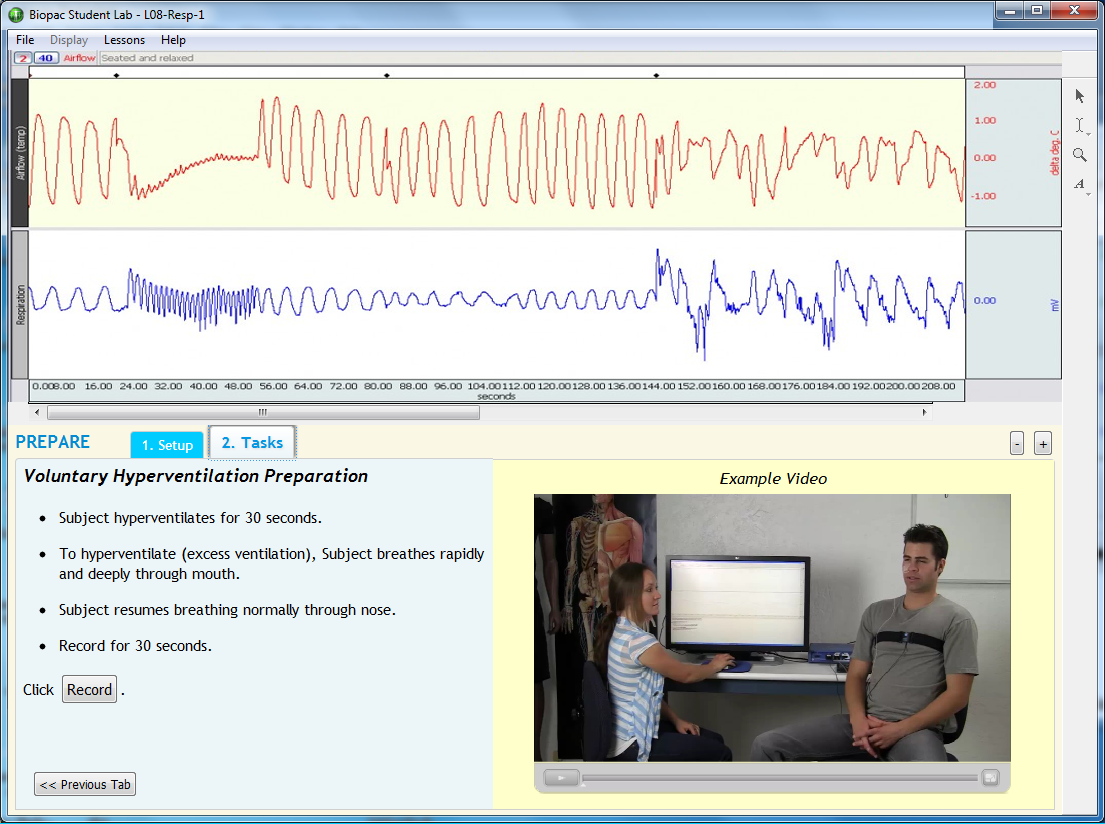L08 Respiratory Cycle I

This BSL lesson demonstrates the relationship between respiration and airflow and factors that influence respiratory rate and depth of breathing (effects of cerebral influence and chemoreceptor influence on the medullary control centers).
The student will record chest contraction and expansion using a respiration transducer and correlate the changes with ventilation. A temperature transducer located beneath one nostril will record the ventilation data. The student will perform a variety of tasks designed to demonstrate certain respiratory phenomena. Students can compare baseline values with response data.
The lesson is extremely flexible and allows the instructor to demonstrate a number of fundamental physiology concepts.
Experimental Objectives
-
To record and measure ventilation utilizing pneumograph and air temperature transducers.
-
To show how ventilation relates to temperature changes in airflow through one nostril.
-
To observe and record chest expansion and contraction and modifications in the rate and depth of the breathing cycle due to cerebral influence and chemoreceptor influence on the medullary control centers.
Tasks Performed by the Student
BSL Lessons are designed to allow at least four students to record and save data in a normal lab period (60-90 minutes). Typically, labs work most efficiently with three or more students working together at each BSL station.
- Record respiration and air flow.
- Sit down and relax.
- Hyperventilate for 30 seconds and then recover.
- Hypoventilate for 30 seconds and then recover.
- Cough once and read aloud.
Videos
BSL 4 L08 Respiratory Cycle
Biopac Student Lab Student Download
Lesson Hardware
This lesson requires a Biopac Student Lab (BSL) System and the following hardware. If your BSL System does not include all hardware items, expand your system by selecting required items below. For more details, review the Lesson: L# BSL Lessons - see the Lab Manual or launch BSL; A# and H# BSL PRO Lessons, click the PDF link above to review full setup, recording, and analysis procedures.
| Item | Name | Cart |
|---|---|---|
| TAPE1 | Adhesive Tape, single-sided, 9.1m | Add to Cart |
| SS6L | Temp., surface/fast-response, BSL | Add to Cart |
| SS5LB | Respiratory Effort Transducer - MP3X/45 | Add to Cart |
Stay Connected